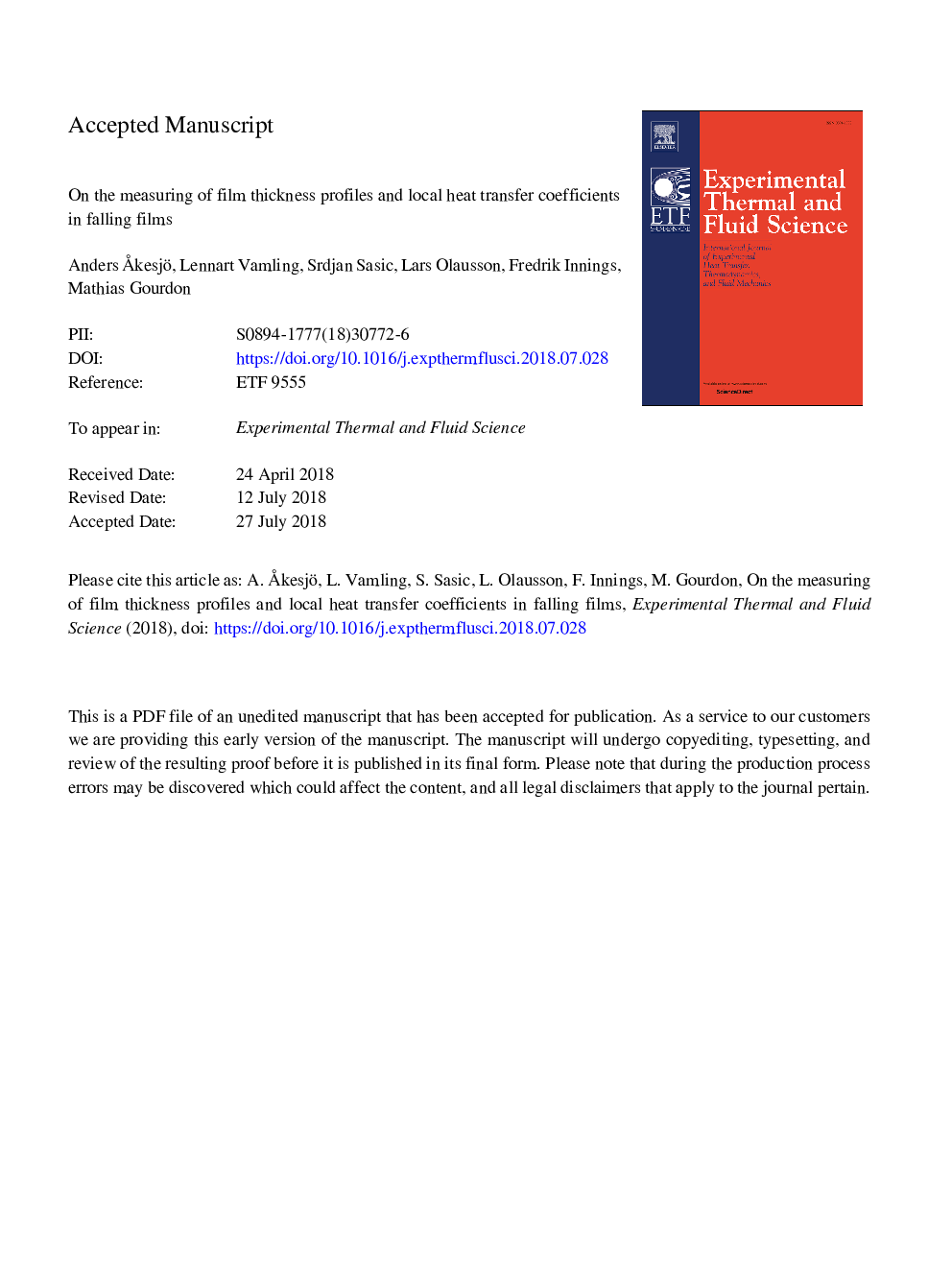| Article ID | Journal | Published Year | Pages | File Type |
|---|---|---|---|---|
| 7051464 | Experimental Thermal and Fluid Science | 2018 | 26 Pages |
Abstract
In this work we develop and report on two novel measurement procedures for elucidating important features of vertical falling films. The first one utilizes a laser triangulation scanner to continuously measure a film thickness profile along a 0.10â¯m long vertical line at a frequency of 500â¯Hz and a resolution of ±1.2â¯Â·â¯10â5â¯m. The second procedure is a flexible method to measure local time-averaged wall and bulk temperatures, making it possible to calculate local heat transfer coefficients at desired locations. The procedures have been implemented and evaluated in a falling film facility, under a broad range of operating conditions and covering different types of fluids and wetting rates. We have shown that the used scanner performs well for several reflecting fluids, that it resolves the flow pattern in high resolution and that it measures the film thickness with an accuracy of at least ±0.1â¯mm. Furthermore, we show that the measurements of the local heat transfer coefficient have an accuracy of ±0.01â¯K, allowing estimation of the heat transfer coefficient with an accuracy of 4-20%, depending on the operating conditions. Both procedures are accurate, robust and simple to use and their combination gives valuable insights into important features of falling films, especially how the hydrodynamics and heat transfer affect each other.
Related Topics
Physical Sciences and Engineering
Chemical Engineering
Fluid Flow and Transfer Processes
Authors
Anders Ã
kesjö, Lennart Vamling, Srdjan Sasic, Lars Olausson, Fredrik Innings, Mathias Gourdon,
